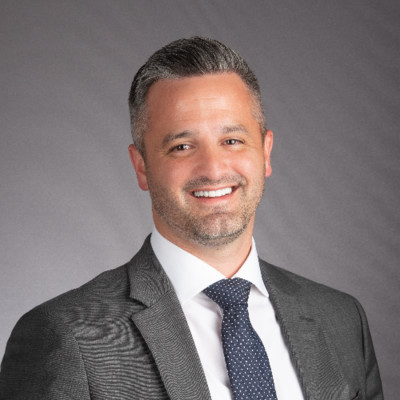How can law firms and accounting firms navigate today’s choppy labor market by recruiting and retaining top professionals without breaking the bank?
A tight and overheated market for employees is impacting a wide array of industries across the nation, and that is especially true among professional service firms like law firms and tax & accounting firms. Not surprisingly, this tight labor situation in the professional services industry is a top concern for firm leaders and will likely impact how firms conduct their business going forward.
In a two-part blog series, the Thomson Reuters Institute speaks to Michael Gerlach, Partner and Business & Professional Services Senior Analyst at the tax, audit and consulting firm RSM. In this second part of our interview, Gerlach offers his insight on the overheated labor market for law firms, corporate law departments, and accounting firms, and what those organizations can do to win this war over talent.
Thomson Reuters Institute: When we hear about how professional service’s leadership and its role in talent recruitment and retainment, we often hear that clear communication to middle management and all staff members is a key ingredient in success. How do you view the role of communication in this area?
Michael Gerlach: All firm leaders need to look at communication as a key component of not only going out to campuses and recruiting, but it’s also important for re-recruiting everybody that’s already in your firm. How do you continue to make them feel confident with your leadership and that you’re making the right decisions?
I think many less-experienced professionals are demanding full transparency in communication — and there’s definitely more transparency that can be made than has been the case historically within professional service firms — but there should be boundaries as well. I think communication is critical, especially as it pertains to retention, but I also think there is a process that firms have to go through to identify how far that transparency will go.
Thomson Reuters Institute: Certainly, some areas of communication are more fraught with challenges than others, is that correct?
Michael Gerlach: Sure, compensation becomes a huge transparency question, right? I know that’s where a lot of younger professionals want that transparency to come out. And clearly, one of the best ways to offer transparency around compensation is to bring the numbers out to the forefront and let everybody know what everybody’s being paid. Of course, that brings about a huge legal risk for most firms because there are going to be gender and age pay gaps evident. Whether these gaps are intentional or not, they’re going to be there — and I think firms are trying to protect themselves from that. So, compensation is one area of transparency that firms are going to have to consider very carefully.
Also, I think it’s vital to keep everyone on the same page as far as what a return to the office means. What exactly does remote work mean? The more upper management partners can communicate down to their teams, the more their teams are going to feel comfortable.

Thomson Reuters Institute: Speaking of fraught communication, recruits and younger professionals have certainly stressed the importance of work/life balance and flexible work schedules, often with a remote component. How should firms handle those conversations, especially if the employee is nervous that the direct supervisor may not be happy to discuss this?
Michael Gerlach: I think we should do a better job at identifying who should be involved in these conversations. Not every attorney or a manager at a law or accounting firm should be having those conversations. As we noted in our most recent Middle Market Business Index special report, going back into an office can be disorientating for employees who have not set foot in their company’s building for months.
Firms need to identify individuals who have the ability to understand perspective, who have the ability to be empathetic with the staff because they’re coming in with different issues than we’ve ever faced before.
Firms need to provide those supervisors with the resources to be able to drive those conversations. Or else, you’re going to lose employees if they feel you won’t address those issues.
Thomson Reuters Institute: You mentioned earlier a firm’s return-to-office plan. How much of that plan needs to be focused on recruitment and retaining talent? And what are the key factors that definitely need to be considered when firms are doing any such planning?
Michael Gerlach: That’s a wide-open box right now, especially given the continuing arc of the pandemic. I think every firm has different policies, and every firm wants something different. I think some of the difficulties you run into involve consistency across all levels.
If you’re a firm that has 12,000 employees and you’re asking all of your staff — that is, everyone below manager — to come back to work, that means about two-thirds of the firm will be coming back to the office. But what are you doing at the manager, senior manager, and partner level? Are you requiring the same from them? And if not, how can you explain that to both recruits and existing talent?
I think one of the key factors is to have consistency across the firm. All employee levels need to face the same expectations. If managers are asking their senior workers to come in and work from the office three days a week, then managers need to be there three days a week as well. And that may be difficult because, typically, a manager has a lot more flexibility in their schedule, and they may have never been operating three days a week from an office.
They have to recognize, however, that now we’re operating in a different time. We need to figure out what these return-to-the-office requests look like, especially to recruits and younger professionals. Most importantly, professional service firms across all industries need to get buy-in from everybody about who is going to be in the office, who is going to work remotely and how much, and what is expected of employees now and six months or a year from now.
How firms address these difficult conversations and how they convey their decisions to their professional workers, especially new and younger employees, will go a long way in determining how successful these firms will be with recruitment and retention in today’s environment.
You can read the first part of our interview with Michael Gerlach here, and learn more about evolving workforce challenges in RSM’s Middle Market Business Index special report.







